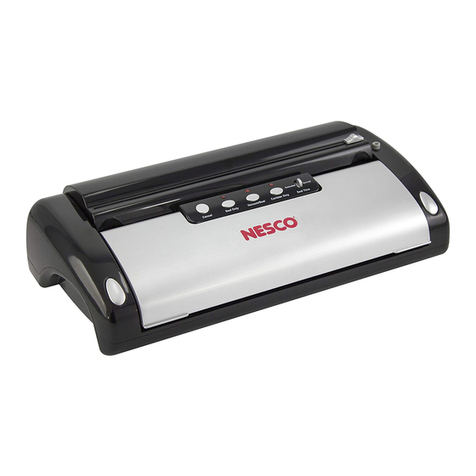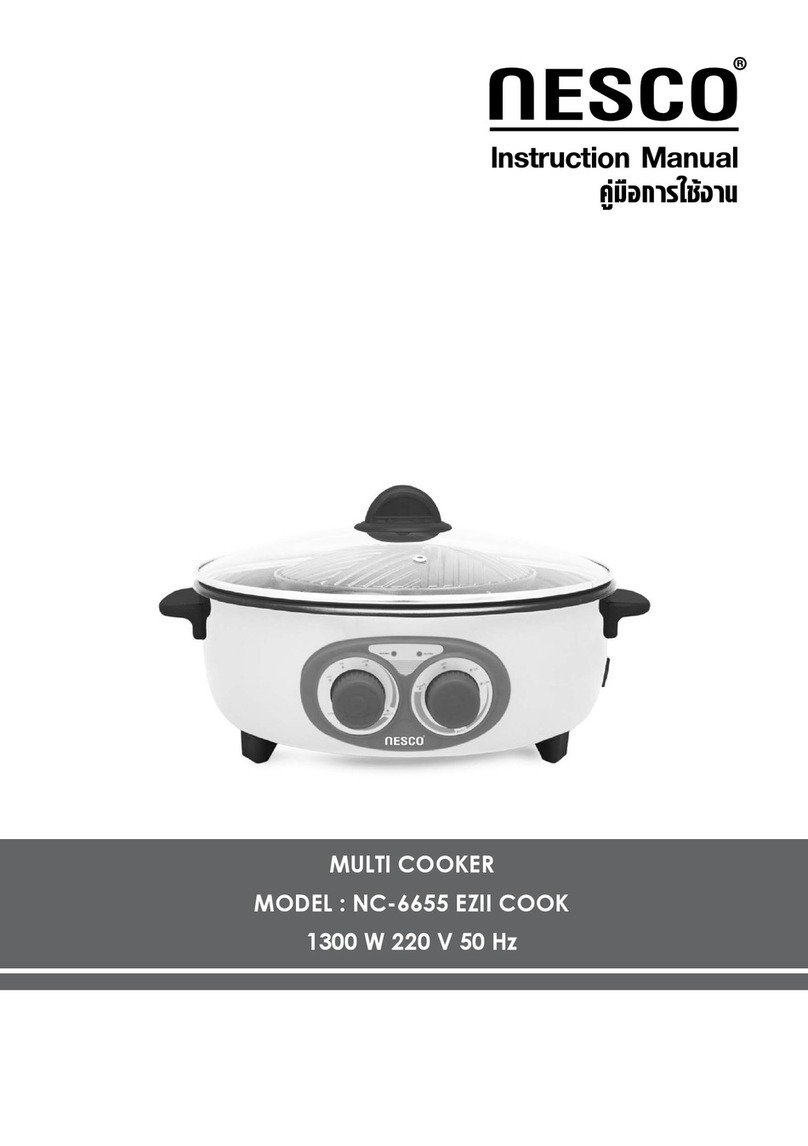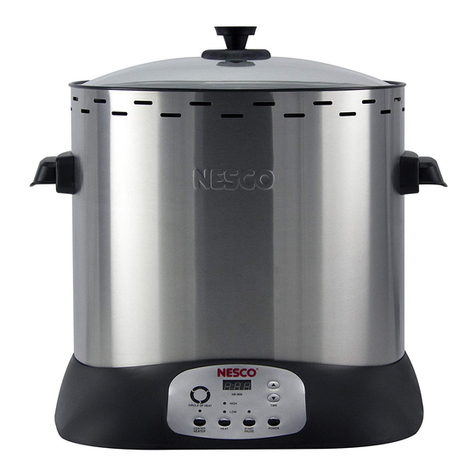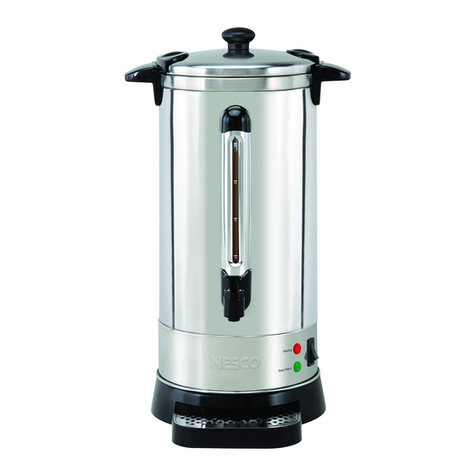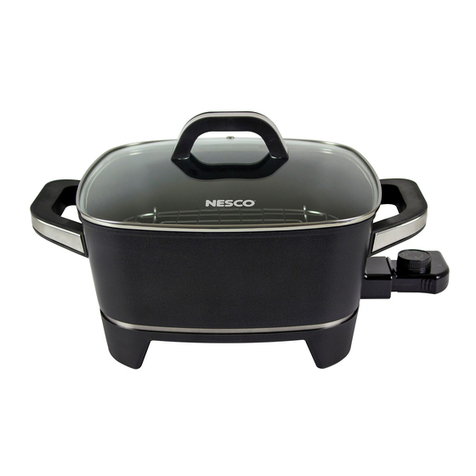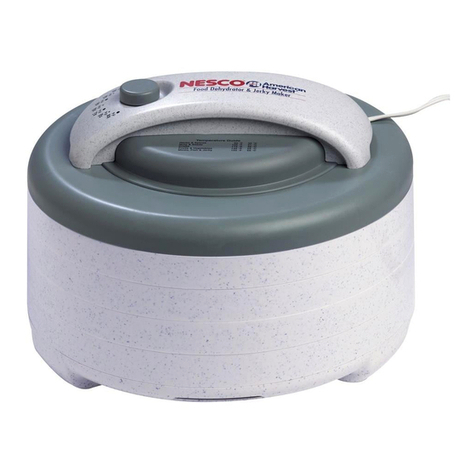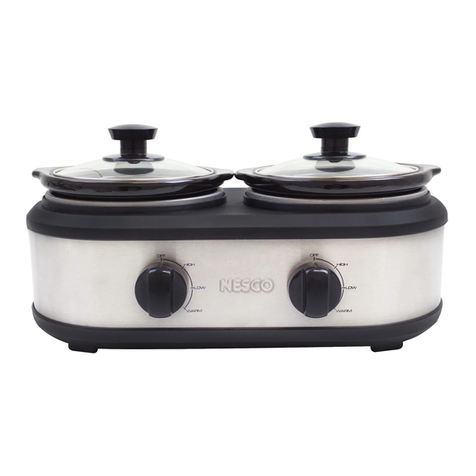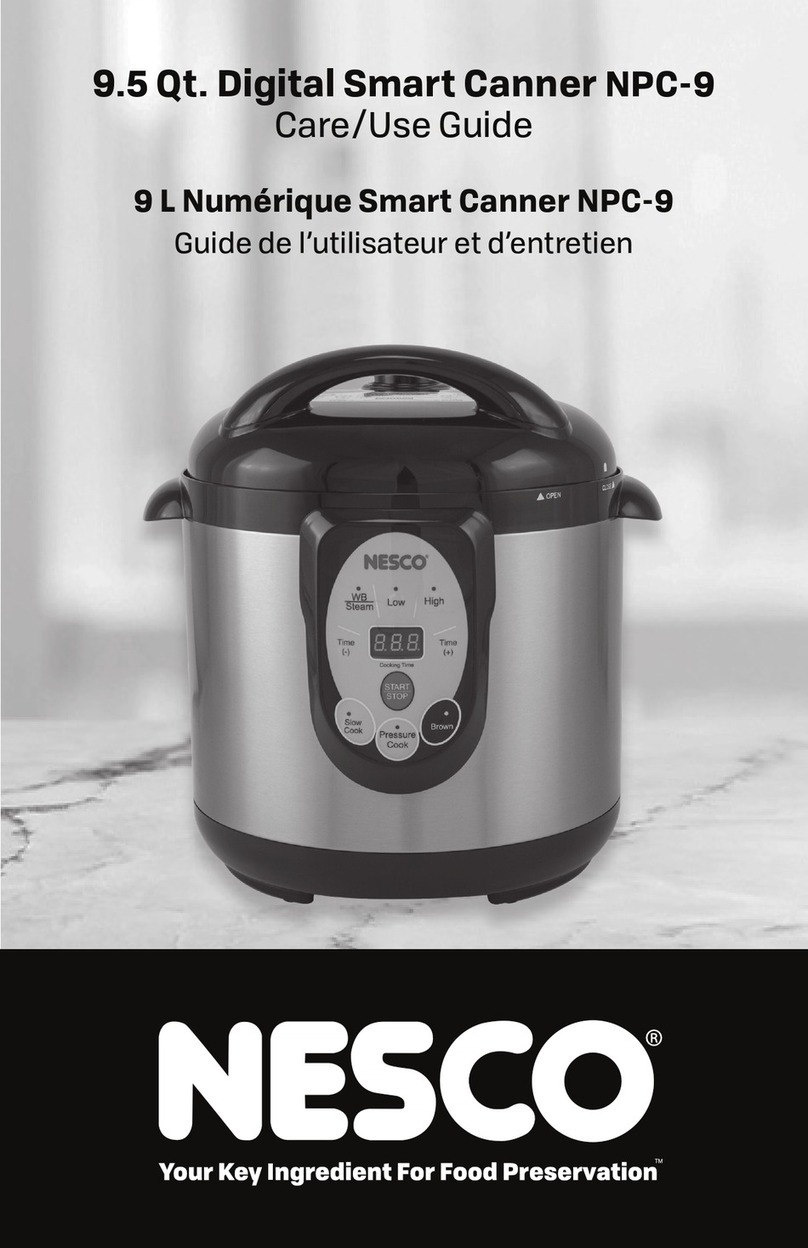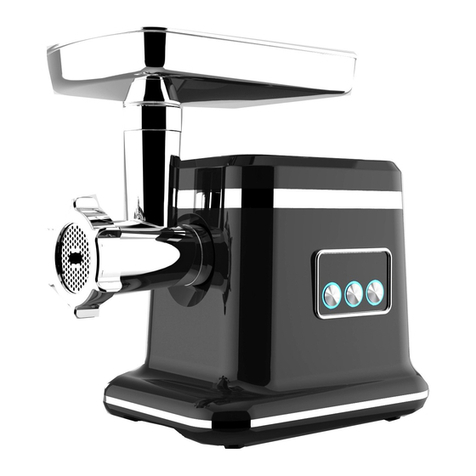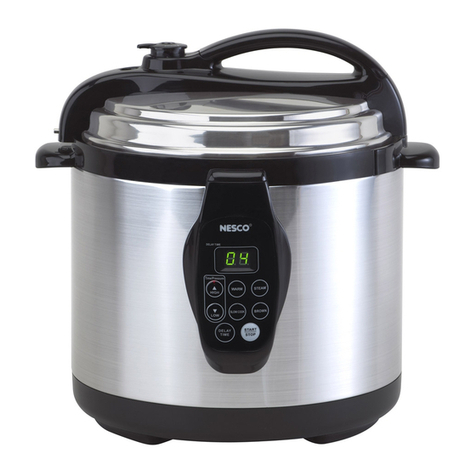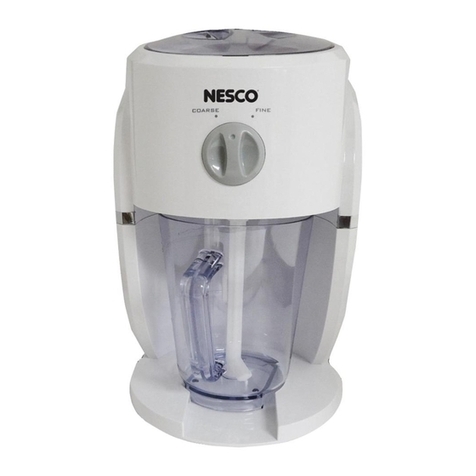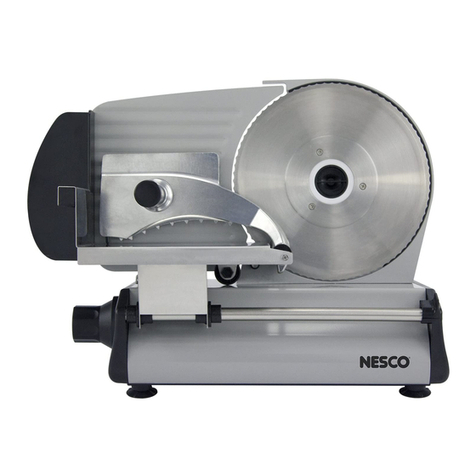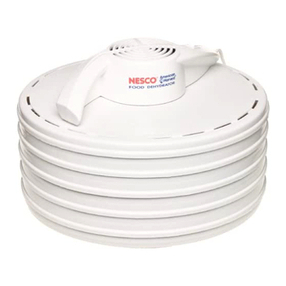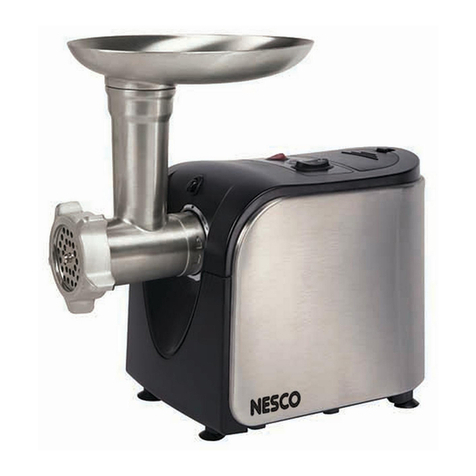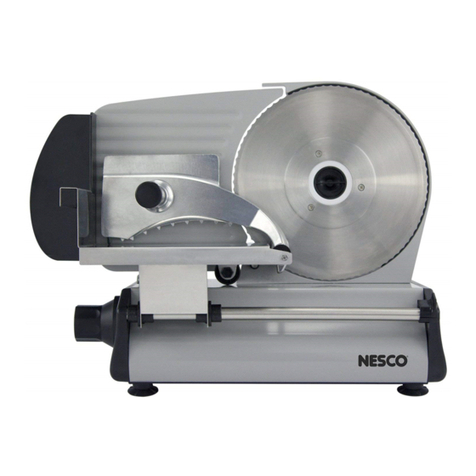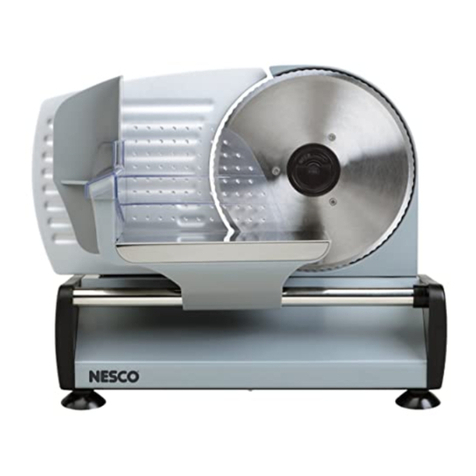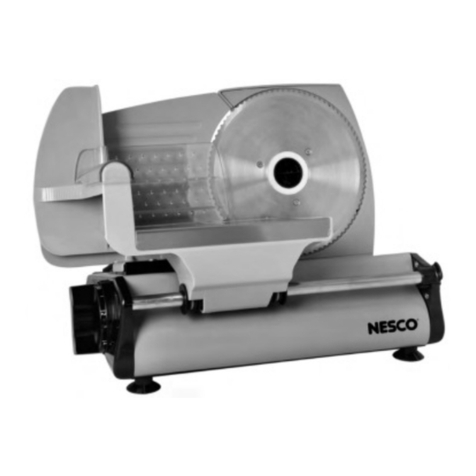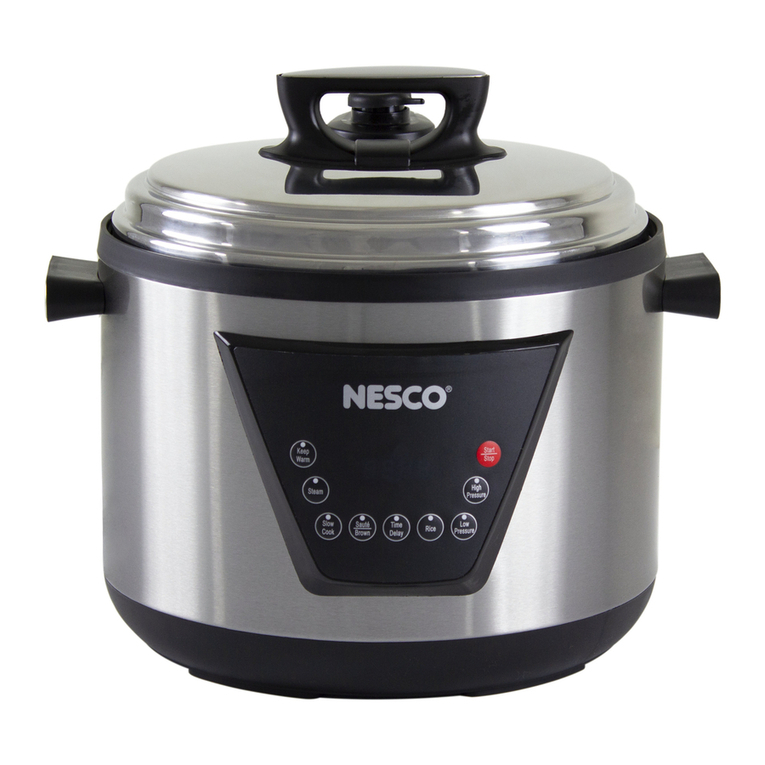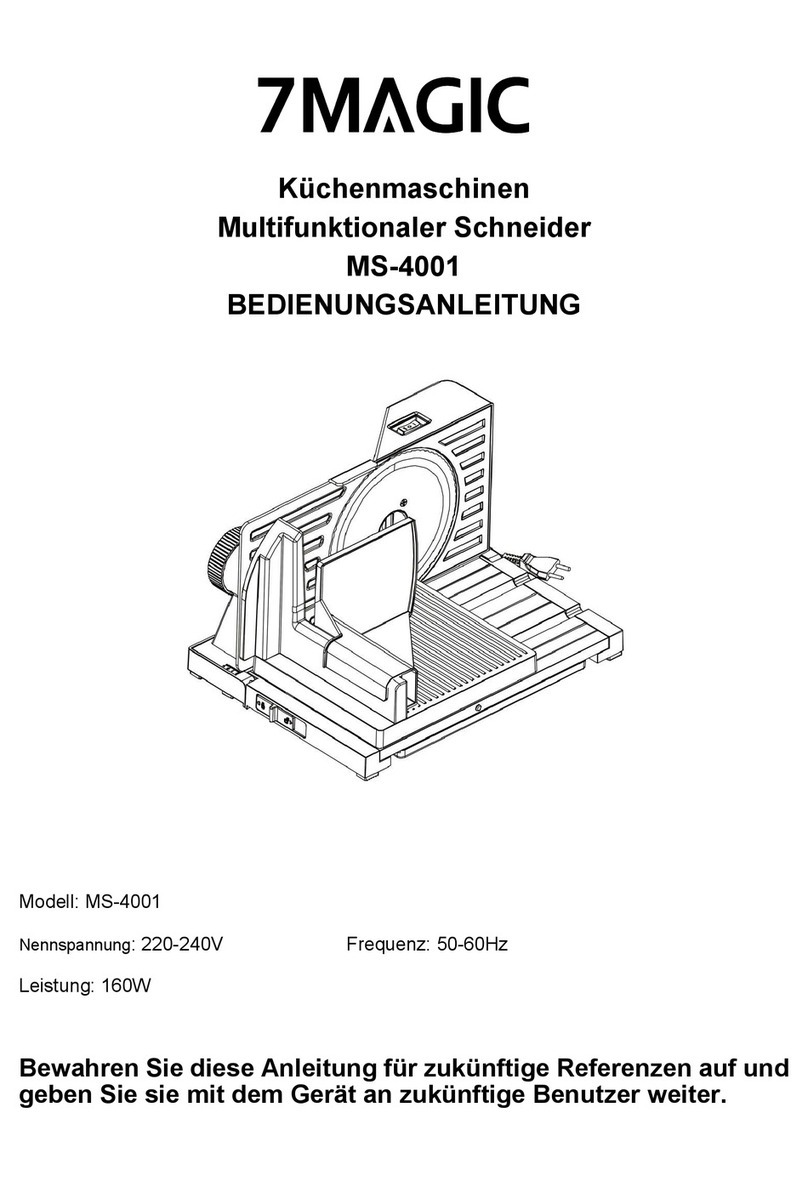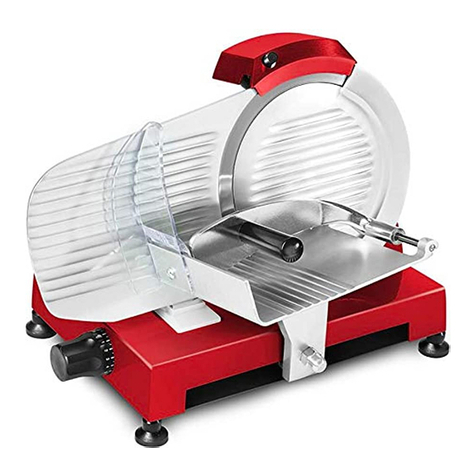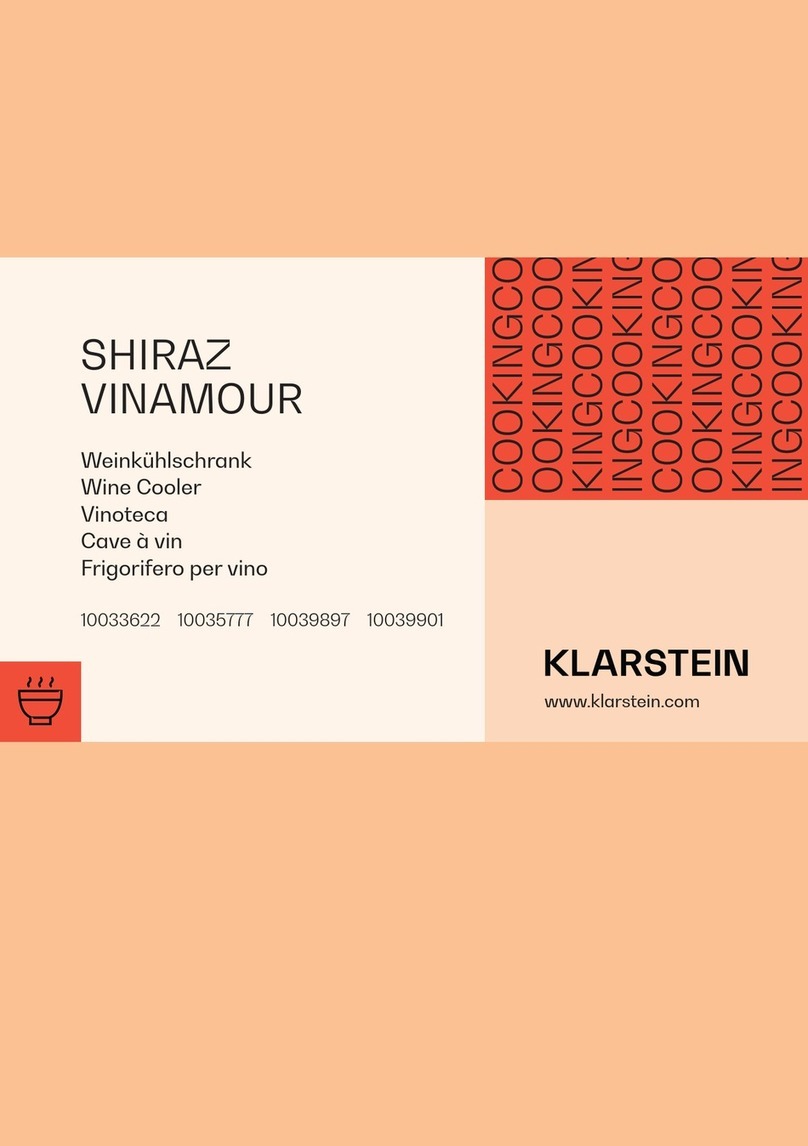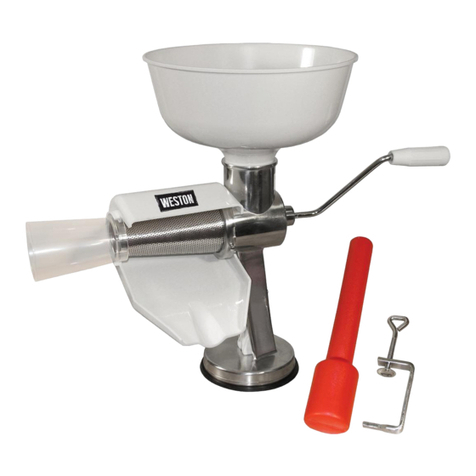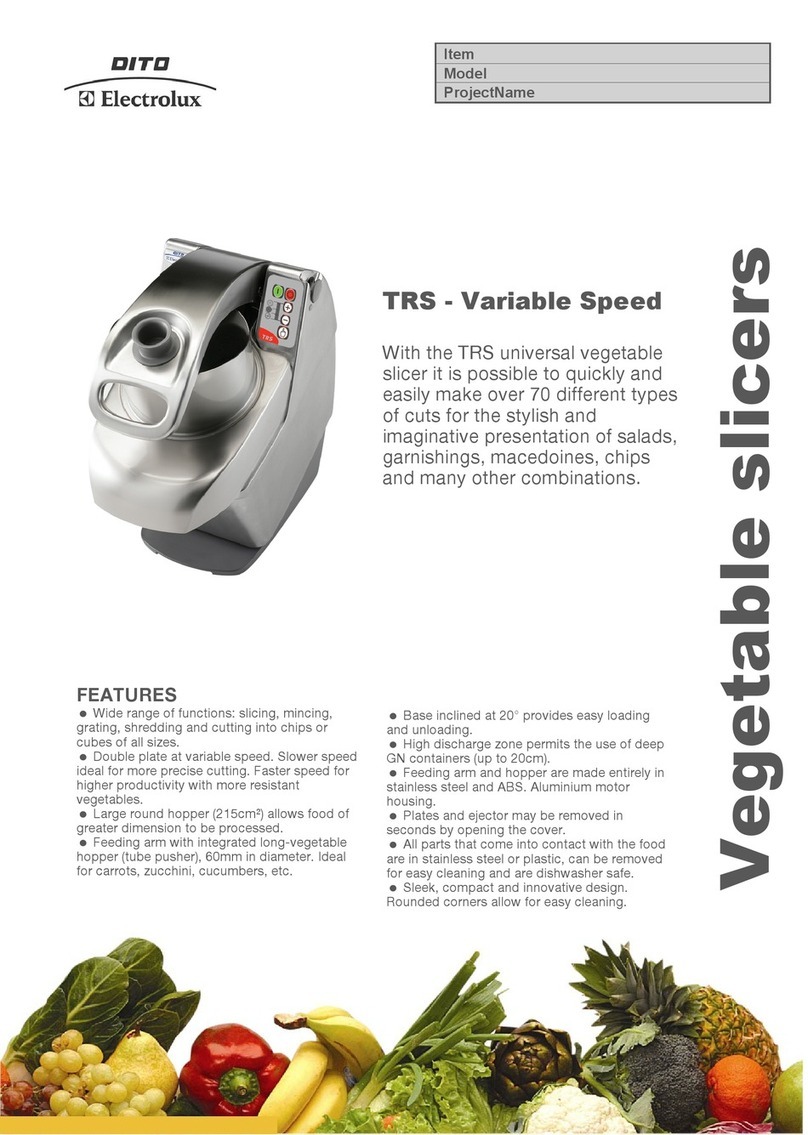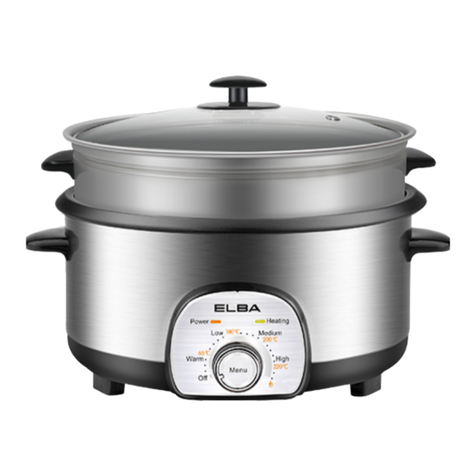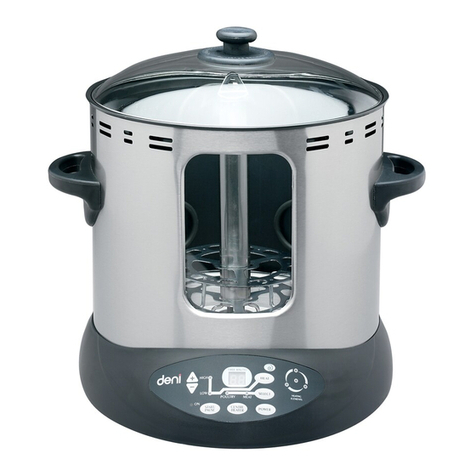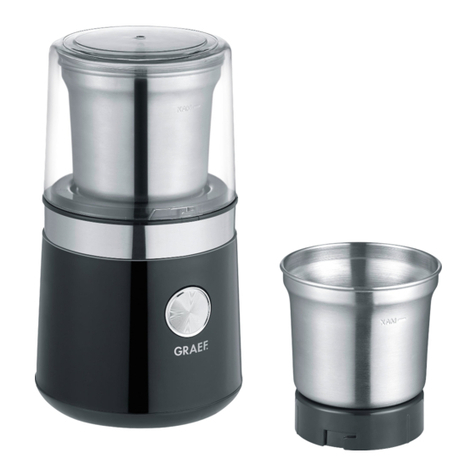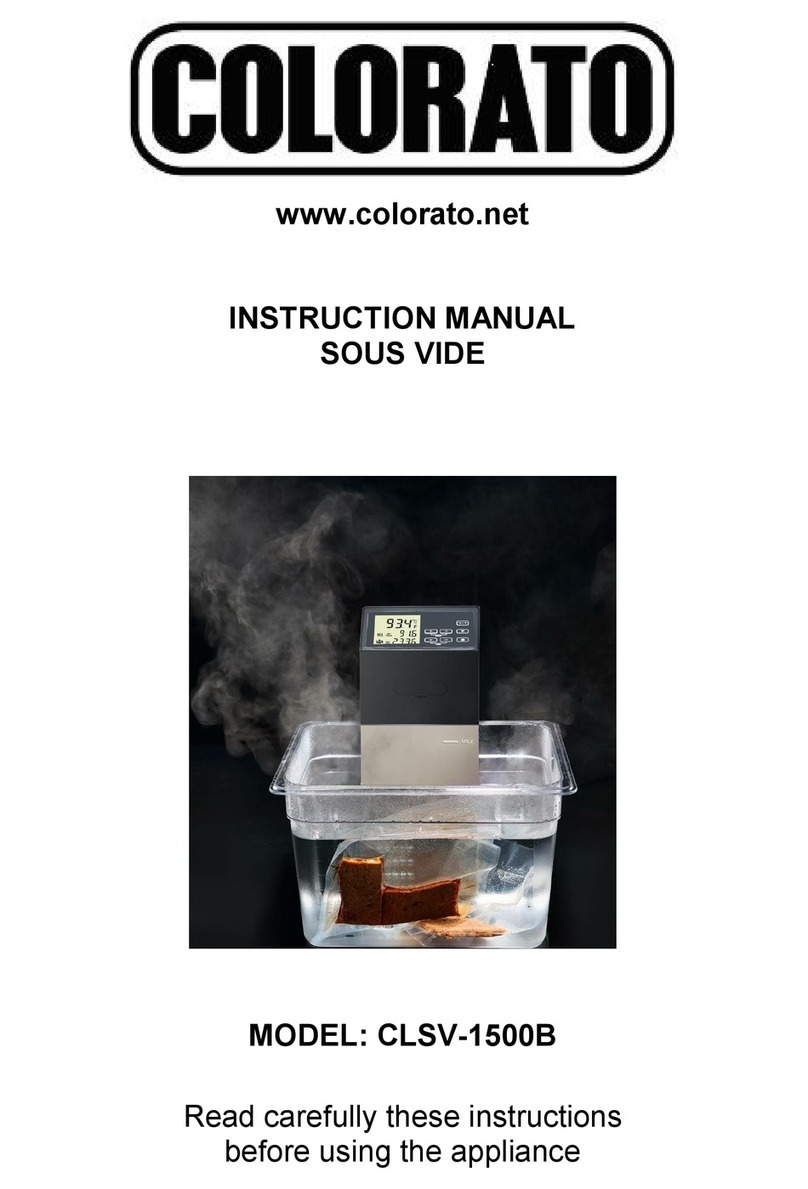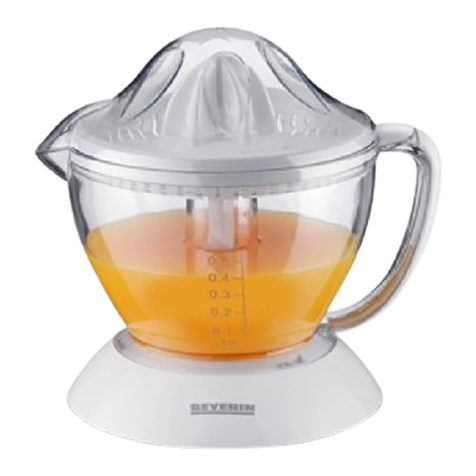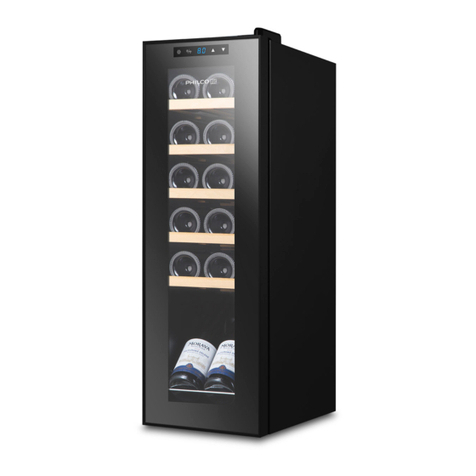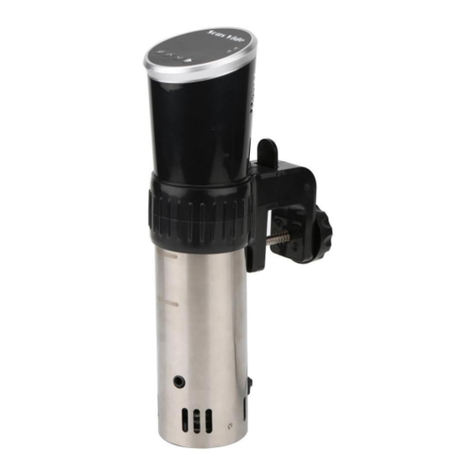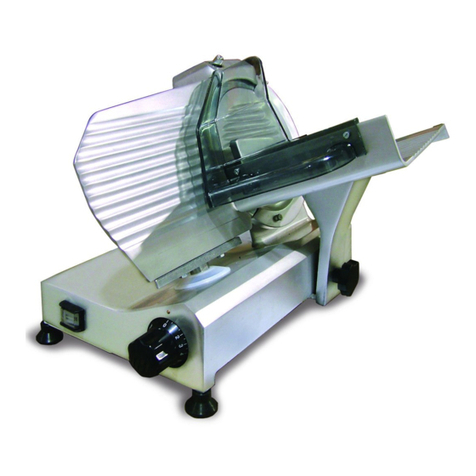DRYING FRUITS
Fruits are ideal to dry because they have a natural high sugar content. They are high
in acid (and consequently less prone to spoilage and micro-organisms), and taste
delicious!
Seasonally, fruit can be obtained in bulk from orchards or farms for considerably
lower prices than you may nd in the supermarket.
Selection
Fruits picked at their prime have the highest natural sugar content and the best
nutritional value. For the best quality product, choose only fresh, ripe unblemished
fruits.
Preparation
Wash fruit thoroughly and remove any imperfections. Remove skins (if desired),
stems and seeds. Halve or slice in 1/4” to 1/2” circles or slices (a food processor or
slicer will speed the slicing and ensure uniform slices, which will allow fruits to dry
at the same rate.) Some fruits have a natural protective wax coating such as gs,
prunes, grapes, blueberries, cranberries, etc. If you want to dry these fruits whole,
dip into boiling water for 1 to 2 minutes (the amount of time needed depends on the
thickness and toughness of the skin) to speed dehydration. This makes the skin more
porous by removing the natural wax coating and thereby speeds up the drying time.
This process is called ‘checking.’ Small lines appear on the fruit skin allowing moisture
to escape but may be too ne to be visible. Many fruits can be dried in halves with
the pits removed. If they are dried with the skins on, be sure to place them skin-
side down to prevent fruit and pulp from dripping down through the trays. Check
frequently near the end of the drying process and remove pieces as they become dry.
To peel or not to peel is a decision only you can make (if the fruit has been articially
waxed, it should denitely be peeled to remove the wax). The skin has nutritional
value, but skins tend to be very tough when dried and fruits take longer to dry with
the skins on. Try fruits both ways – peeled and unpeeled – then decide for yourself.
Pre-treat if desired and place the fruit into the dehydrator to dry at 135°F (57C).
Pre-Treatment
Pre-treatment minimizes oxidation, and gives you a superior quality, better tasting
product with less vitamin loss. Apples, pears, peaches and apricots are better when
pre-treated. They are more appetizing, have a longer shelf life and higher nutritional
value. Place cut fruits that tend to brown in a holding solution of ascorbic acid to
reduce browning during preparation. Do not keep cut fruit in a holding solution for
more than one hour. Pre-treatment can vary from soaking in fruit juice, ascorbic acid
mixtures, syrup blanching, steaming, to sulfating. The results of these methods also
vary. Experiment and decide for yourself which one you like best.
Natural Pre-Treatment:
Fruit juices containing ascorbic acid may be used as a natural pre-treatment to
reduce browning. Although there will be some loss of color, pineapple, orange,
lemon, or lime juice can be used. Ascorbic acid mixtures, available from your
supermarket, can also be used. Follow the directions on the package. Slice fruit
directly into juice or ascorbic acid mixture. Soak 5 minutes and place on trays. Fruits
can also be dipped in honey or a honey/juice mixture.




















